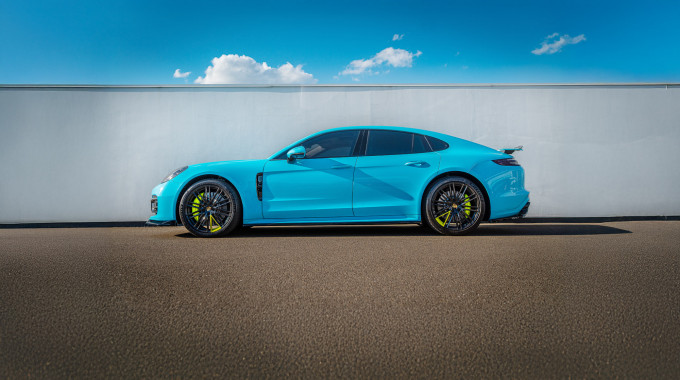
How Do Hybrid Cars Work? A Complete Guide
It’s been more than 20 years since first the Toyota Prius and then the Honda Insight introduced modern hybrid-electric cars to Canada.
Those quirky machines were years ahead of their time and while the popularity of electrified cars has waxed and waned in the intervening two decades, hybrids have never been more in demand than they are today.
What exactly are hybrid cars?
The term ‘hybrid’ is applied to any vehicle that has more than one form of propulsion. In a small number of European cars, that has meant a diesel engine paired with an electric motor, but all of the hybrid cars now on sale in Canada combine gasoline and electric power. Most hybrids can drive using the gas engine alone, the electric motor alone, or on a combination of the two.
What are the benefits of hybrid cars?
The first hybrid cars were billed as planet-saving eco-machines and garnered a strong following among environmentally conscious buyers and technology-loving early adopters. Even today, fuel and emissions savings remain the number one benefit of driving a hybrid.
Before you consider buying a hybrid vehicle, make sure to read our post: Buying a Used Hybrid Car: Here’s What to Look For.
Hybrid cars use less fuel because waste energy is stored in an onboard battery to be reused by the electric motor to power the car. That means the combustion engine can be used at reduced power, operated at its most efficient speed, or switched off altogether. Less fuel is burned, and fewer greenhouse gas (GHG) emissions are sent out the tailpipe, which contributes to better local air quality.
The fuel savings from hybrid cars are greatest in stop-start city driving, when regenerative braking (more on that in a minute) is being used repeatedly to recharge the battery and engine use is minimized. At highway cruising speeds, a hybrid car usually relies almost exclusively on the gas engine, so the fuel consumption is much closer to that of a conventionally powered vehicle.
Hybrids can provide low-speed torque for improved acceleration, off-roading and towing
Recently, auto makers have begun to tout the performance benefits of a hybrid powertrain (a powertrain is the combination of components that power the car and transfer that power to the wheels). Electric motors produce their maximum torque (twisting force) immediately, unlike a combustion engine, whose maximum torque typically arrives at higher engine speeds. This means that hybrid powertrains can offer lots of low-speed torque, which is great for acceleration, off-roading and towing.
Hybrid pickup trucks like Ford’s F-150 PowerBoost or Toyota’s Tundra i-Force Max don’t mention the word ‘hybrid’ in the name because they are being sold primarily on their performance benefits rather than on their fuel savings.
Like pure-electric vehicles (EVs), hybrids can benefit from being smoother and quieter to drive than combustion-engine alternatives. The electric motor’s low-speed torque helps you accelerate quickly away from a stop light. There is less noise and vibration from a high-revving engine and some hybrids use the electric motor to smooth out gearshifts. Especially at low speeds, the car runs near-silently for the time when the gas engine is switched off.
Hybrid car components: engine, electric motor, transmission
There are different configurations of hybrid powertrains, but all hybrids contain variations of the same basic set of components. First up is the familiar gasoline engine, which is often downsized compared with non-hybrid models – saving more fuel – as an electric motor is able to make up for the lost power.
Instead of the regular Otto cycle, gas engines in a hybrid system often run on the Atkinson cycle, during which the intake valve is closed later to increase efficiency. The engine produces less power as a result but again, the electric motor easily picks up the shortfall.
Different types of transmission are used in hybrid cars, from planetary CVTs, to conventional torque-converter automatics, to dual-clutch manual transmissions. The cars also contain one or more electric motors, which might be located within a transmission or in a separate module.
Place an additional electric motor on the rear axle in a hybrid setup, as in the Toyota RAV4 Hybrid, and you can achieve all-wheel drive (AWD) without needing to mechanically transmit the engine’s drive from the front of the car to the rear, saving fuel and freeing up space inside the passenger compartment.
One or more of the motors will also function as a generator. Spun by the rotating wheels under braking, it converts energy normally lost by friction brakes as heat into electrical energy to recharge the high-voltage battery. This is known as ‘regenerative braking’ and takes care of much of the braking in a hybrid car. The conventional friction brakes – usually discs and pads – will supplement regenerative braking during harder stops.
This quick 3-minute video from Engineering Explained breaks down regenerative braking’s key functionality and setup:
Hybrid car components: battery and electronics
The high-voltage drive battery is also charged using power from the engine. Different battery capacities and chemistries are used in different hybrid cars, according to the power required and packaging space available. The more power-dense but also more expensive lithium-ion batteries seen in EVs such as Teslas are less common in hybrid cars, notably those made by Toyota, which still favours the older but well proven nickel-metal hydride (NiMH) chemistry.
Other components in the system include the inverter, which converts DC current to AC, for example to power the electric motor. There’s also a DC/DC converter, which converts DC power between the high voltage used for the drive motor and 12V for the low-voltage electrical system. Hybrid cars retain this system, including a traditional 12V battery, to power accessories like headlights and the infotainment system. Finally, there are electronic control units to ensure the complex hybrid system works as a whole.
Below, a look at the conventional hybrid vehicle setup with an internal combustion engine and electric motor/generator:

Photo: National Renewable Energy Laboratory
Types of hybrid powertrains
Drawing from this menu of components, different hybrid cars deploy a variety of technical solutions. These configure the elements differently and vary the number and location of electric motors and the type of transmission, but all achieve pretty much the same goal: electrifying the powertrain in order to save fuel and/or increase power.
There is even technical variation within the products of individual auto makers. Recently, new hybrid architectures from Ford and Toyota, specifically designed for use in larger RWD or AWD vehicles like the Explorer or Tundra, entered production alongside their existing technologies for smaller cars and SUVs.
Hybrid cars from the likes of Ford, Honda, Hyundai-Kia, Mitsubishi, Nissan and Toyota all seamlessly blend the combustion engine and electrical energy in different ways to power the car. Switches between different modes of propulsion generally happen without any need for driver input, although some hybrid cars also have an ‘EV’ override that will turn the engine off and drive the car on electric only, providing the electric mode can meet the driving conditions of the moment and there’s sufficient charge in the battery.
Plug-in and mild hybrids
In contrast to the regular or ‘self-charging’ hybrids (they’re the same thing), plug-in hybrid electric vehicles (PHEVs) can be recharged by plugging into an electrical socket as well as by regenerative braking and the gas engine. PHEVs are becoming increasingly popular as a halfway house to EVs. Examples like the Chrysler Pacifica Hybrid, Mitsubishi Outlander PHEV, Lincoln’s Grand Touring models, and the 2021 Ford Escape PHEV we reviewed here feature larger battery packs than regular hybrids, with greater electric-only range – typically around 50km.

2021 Ford Escape Plug-in Hybrid (PHEV) | Photo: Ford
Plug-in hybrids are a good solution for customers who want to commute or drive short distances around town on electric power, but who also need the flexibility of a gas engine for longer trips away from EV recharging infrastructure.
At the other end of the scale, mild hybrids like the eTorque trucks and SUVs from Ram and Jeep cannot drive solely on electric power, but still use less fuel than a conventional powertrain. Mild hybrids replace the alternator with a motor-generator and add a small battery pack, often operating on a 48V electrical system. The motor-generator captures energy under braking to recharge the battery pack, which might then be used to quickly restart the engine in stop-start situations, smooth out gear changes, keep the regular 12V battery charged or add low-speed torque to the gas engine.
The future of hybrids
Not every automaker has embraced hybrid technology. Some, like General Motors and Volkswagen with the new ID.4 crossover, are jumping straight to EVs, but Canada’s geography and currently localized EV recharging infrastructure mean that pure-electric vehicles still aren’t the right choice for every Canadian buyer.
The good news is that other automakers are doubling down on hybrid technology. Hyundai-Kia has several new models on sale. Mitsubishi has renewed its best-selling Outlander PHEV and Ford has hybridized its new compact pickup, the Maverick. Then there’s Toyota, which builds the biggest selling hybrids in Canada. In 2021, electrified models accounted for more than a quarter of all Canadian Toyota and Lexus vehicle sales. The brand is widening its range of hybrids for 2022 with the introduction of the Tundra i-Force Max and soon, a Sequoia full-size SUV with the same powertrain.
Hybrids offer a great way to cut your fuel bills and GHG tailpipe emissions or add power to your truck, without compromising on the practicality of an onboard gas engine for longer trips. We expect fuel-efficient hybrid cars, SUVs and pickups to sit alongside the emerging pure-electric vehicles at the heart of the Canadian auto market for years to come.
Are you buying a used hybrid vehicle? we recommend getting pre-approved first! With a pre-approval, you can shop with confidence knowing exactly what you can afford. Get pre-approved online in under 3 minutes. Any credit accepted! .







